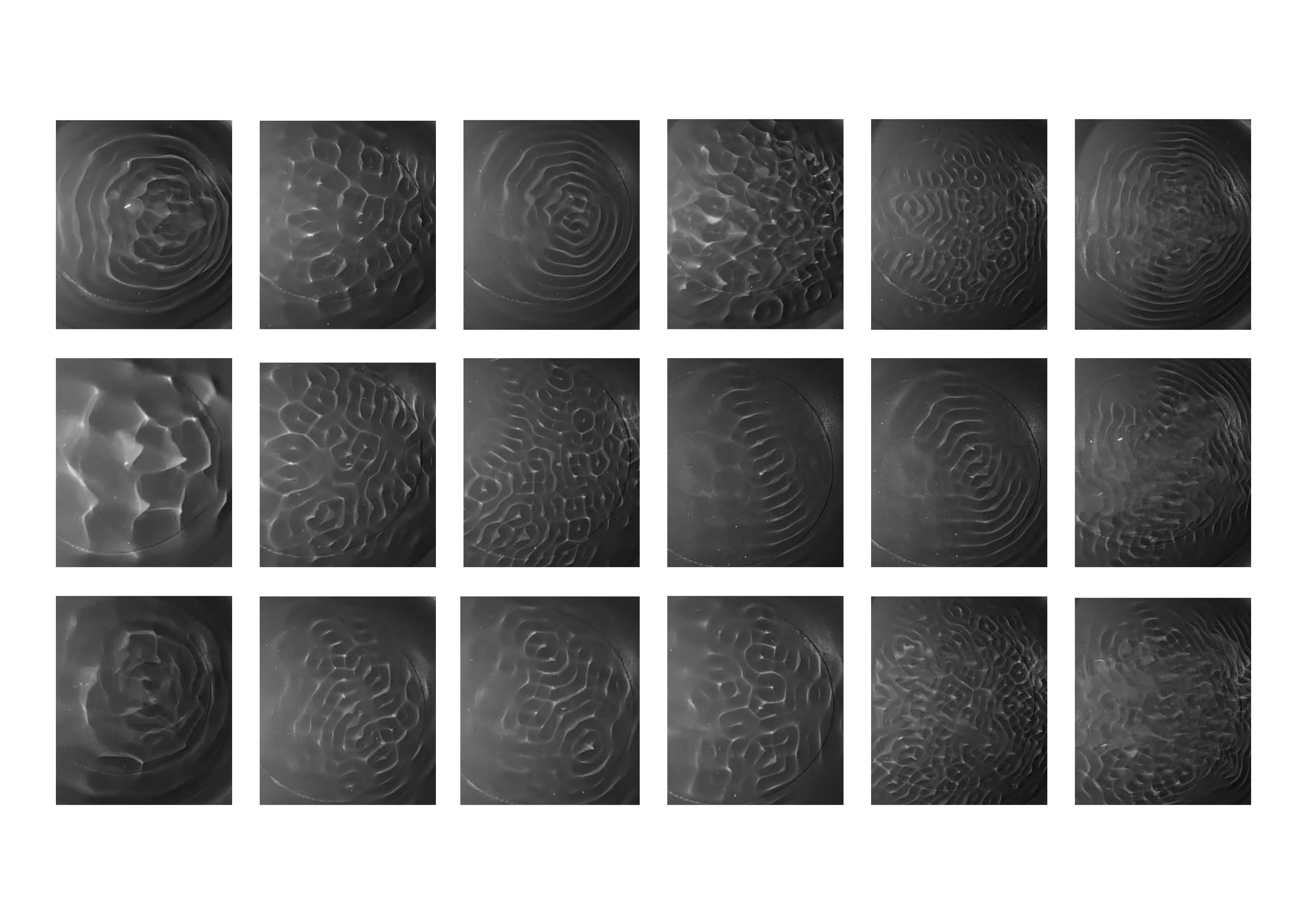Moirai
performative environment
Moirai (2024) sound-performance created in collaboration with Celestina Minichova and Martin Kosorín.
Moirai, involves stones, sand, water, metal structures, strings, constructions, and cables and draws inspiration from Greek mythology. Like the Moirai—the Fates of Greek myth who spin, measure, and cut the threads of life—this performative piece symbolically unwinds multifaceted destinies and potential futures, offering interpretations that reflect the climate crises we currently face.
The piece operates with an interactive mechanism: when water drips onto a stone, it closes an electrical circuit, which then activates a sound. This sound could be anything from the resonance of loosely tuned strings, the hum of curved metal rods, or even a “prophecy” from the Moira that speaks to the unpredictable outcomes of our collective actions. The sounds, like the fates, are inherently fluid and open to the audience’s influence; they can be reshaped, redirected, fulfilled, or left incomplete, mirroring the ways in which we navigate our lives and choices.
As the piece unfolds, we slowly uncover our potential futures, discovering a sense of collective tranquility amidst the chaotic blend of sounds, predictions, and interconnected moments. The Greek concept of *Kaos*, or chaos, permeates the installation, symbolizing the raw potential and disorder from which all creation emerges. Ultimately, the piece invites viewers to reflect on destiny, choice, and the elusive balance between order and chaos, sparking conversations about our shared humanity in an unpredictable world.
Thank you @dihan.happening for the opportunity to perform within your performance night CRISIS.
Photos from the performance @josh__mllr
Moirai, involves stones, sand, water, metal structures, strings, constructions, and cables and draws inspiration from Greek mythology. Like the Moirai—the Fates of Greek myth who spin, measure, and cut the threads of life—this performative piece symbolically unwinds multifaceted destinies and potential futures, offering interpretations that reflect the climate crises we currently face.
The piece operates with an interactive mechanism: when water drips onto a stone, it closes an electrical circuit, which then activates a sound. This sound could be anything from the resonance of loosely tuned strings, the hum of curved metal rods, or even a “prophecy” from the Moira that speaks to the unpredictable outcomes of our collective actions. The sounds, like the fates, are inherently fluid and open to the audience’s influence; they can be reshaped, redirected, fulfilled, or left incomplete, mirroring the ways in which we navigate our lives and choices.
As the piece unfolds, we slowly uncover our potential futures, discovering a sense of collective tranquility amidst the chaotic blend of sounds, predictions, and interconnected moments. The Greek concept of *Kaos*, or chaos, permeates the installation, symbolizing the raw potential and disorder from which all creation emerges. Ultimately, the piece invites viewers to reflect on destiny, choice, and the elusive balance between order and chaos, sparking conversations about our shared humanity in an unpredictable world.
Thank you @dihan.happening for the opportunity to perform within your performance night CRISIS.
Photos from the performance @josh__mllr
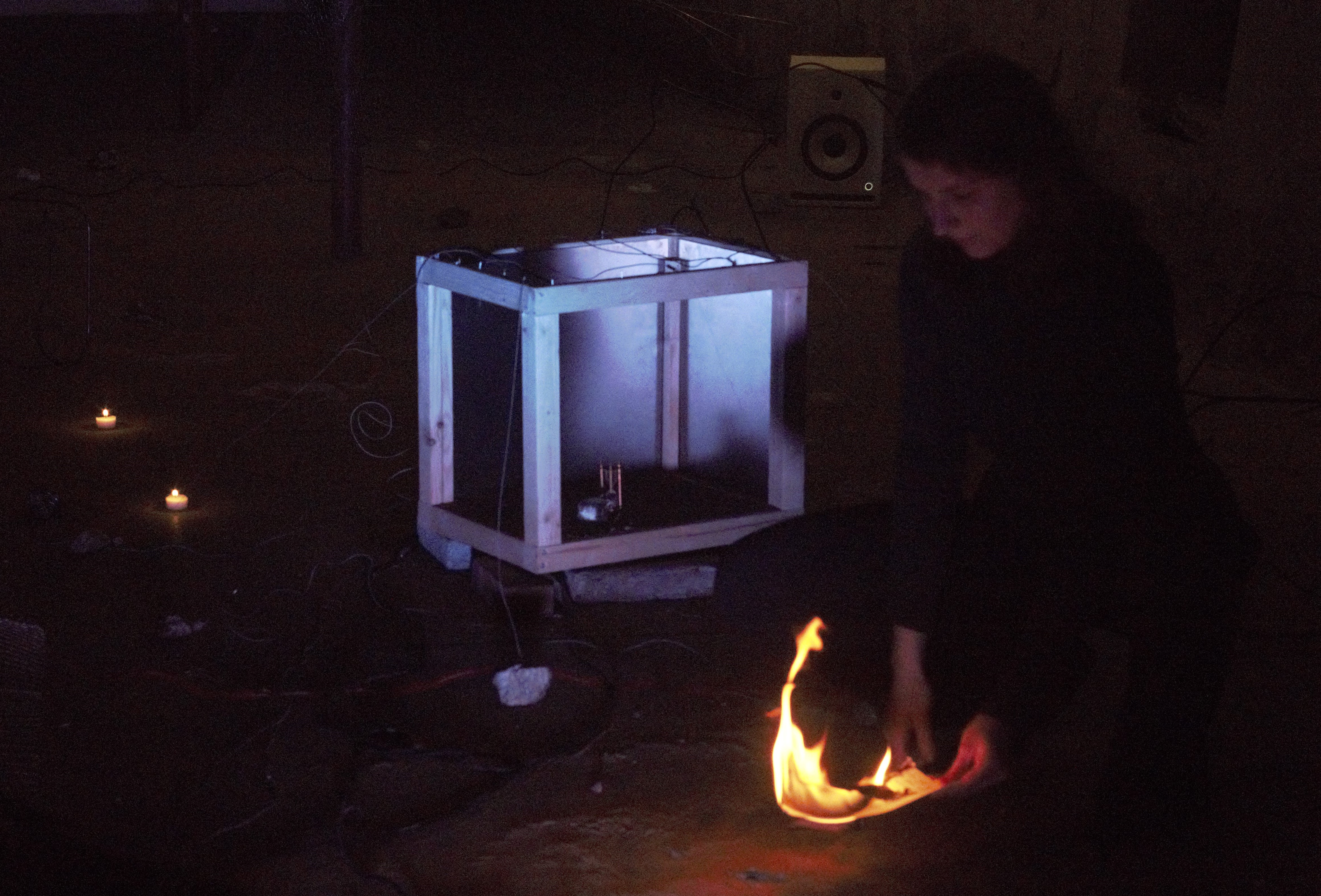

Soniferous garden
performative environment
Soniferous garden is a performing environment developed in collaboration with Cecilie Fang, consisting of multiple sensors, a water circulation system, soil, liquids and live visuals. As the sensors measure the moisture, pH value and water level of the soil, the data is translated into sound. A camera is set to translate the movement of soil into live visuals on screens. The project is a result of a dialogue, forming a common ground for discussion about the extraction of soil and water.
As a term, soniferous garden was coined by composer R. Murray Schafer, who believed every urban space needed such a garden to retreat froman overflow of the city soundscape. His approach was later often criticized
for the dichotomy between nature and culture within his philosophies. The installation creates a Lo-fi site
for listening and encountering the landscape, openly questions the interaction of technology within natural environments.
An installation space to be activated through performance and interaction.
A third place to form a community through the repetition of gestures.
As a term, soniferous garden was coined by composer R. Murray Schafer, who believed every urban space needed such a garden to retreat froman overflow of the city soundscape. His approach was later often criticized
for the dichotomy between nature and culture within his philosophies. The installation creates a Lo-fi site
for listening and encountering the landscape, openly questions the interaction of technology within natural environments.
An installation space to be activated through performance and interaction.
A third place to form a community through the repetition of gestures.
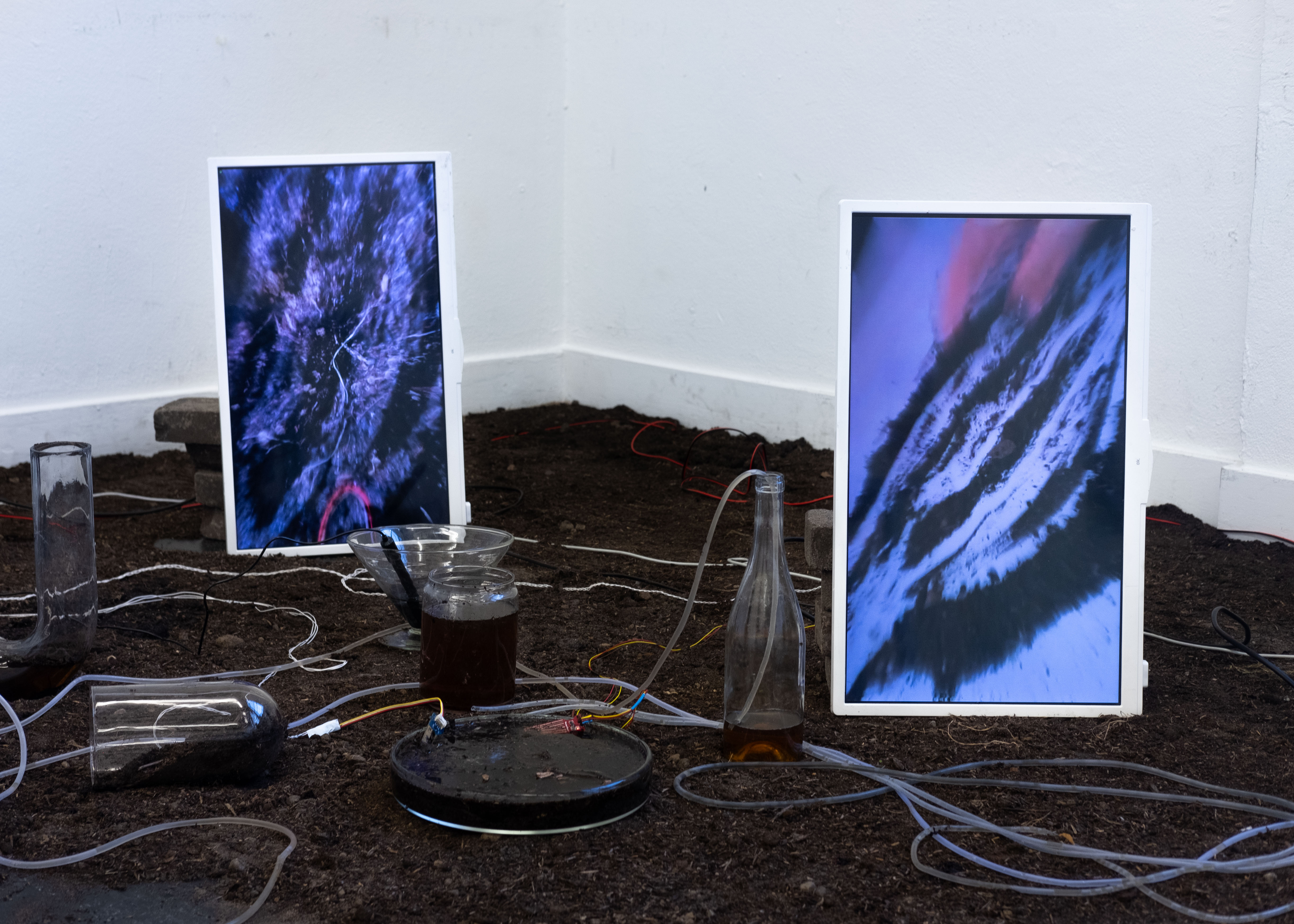
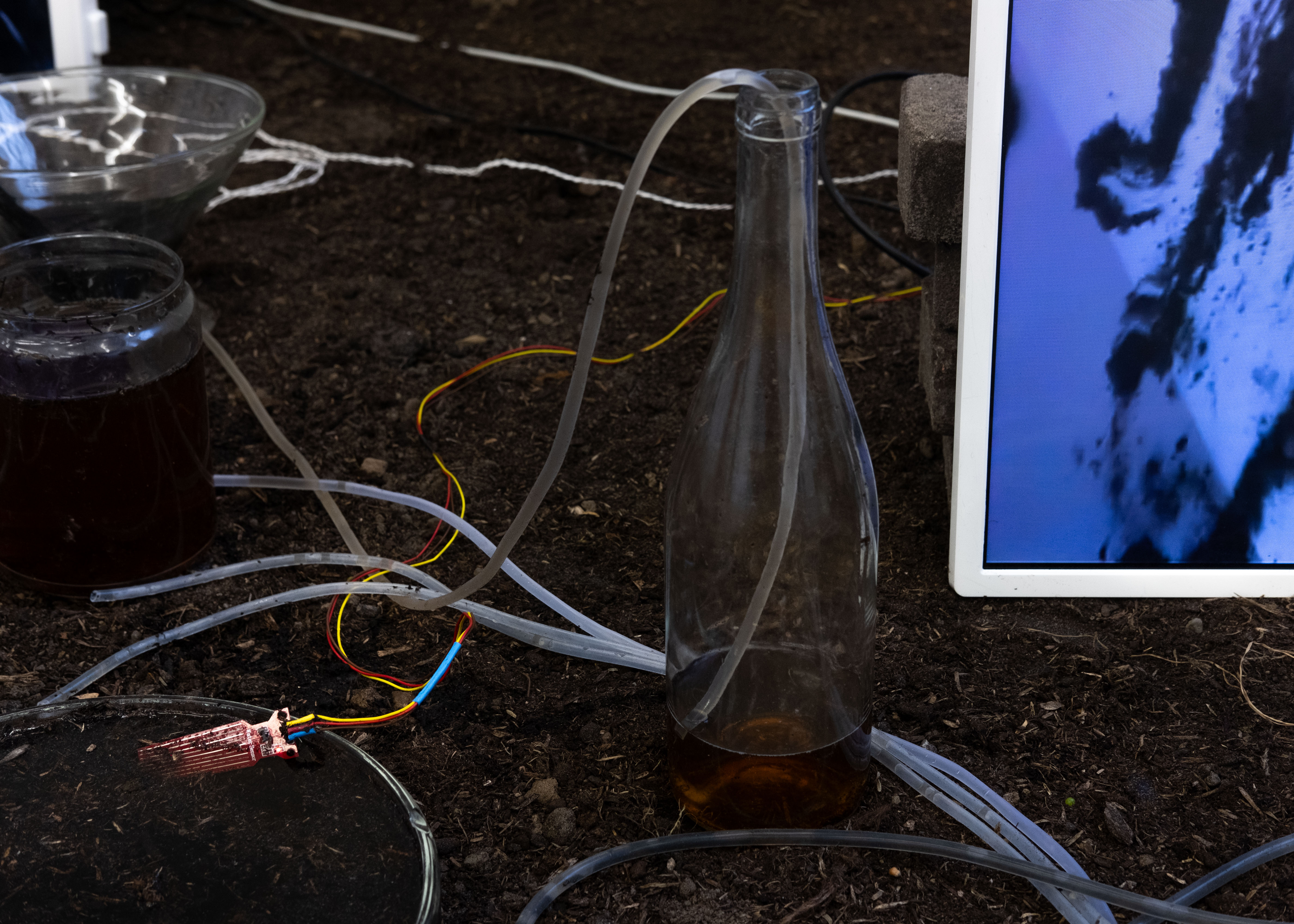

Another failed project
Site-specific
group performance
Another failed project, was a site-specific group performance that took place at the Chemical waste dump CHZJD in Bratislava- Vrakuňa district. This location is a hidden place in the capital of Slovakia, where toxic substances are contaminating soil, underground water since 1966. The landfill in Vrakuna Bratislava - containing hazardous waste originating mostly from chemical industry - has been contaminating the soil and groundwater for over 30 years. At the moment potentially endangering one of the biggest sources of drinkable water in middle Europe -Žitný ostrov.
~
Featuring:
Viktoria Arvayová, Adam Balogh, Silvia Binda Heiserova, Václav Janoščík, Fero Király, Celestína Minichová, Kasha Potrohosh, Volodymyr Serhachov, Martin Toldy, Boris Vitázek, Marína Abramovič Po Sebe Neupratuje
You can read more about the project in this article @mloki.sk (in Slovak)
Photos by Adam Balog, Lujza Reingraber and Lisa Achammer.
~
Featuring:
Viktoria Arvayová, Adam Balogh, Silvia Binda Heiserova, Václav Janoščík, Fero Király, Celestína Minichová, Kasha Potrohosh, Volodymyr Serhachov, Martin Toldy, Boris Vitázek, Marína Abramovič Po Sebe Neupratuje
You can read more about the project in this article @mloki.sk (in Slovak)
Photos by Adam Balog, Lujza Reingraber and Lisa Achammer.
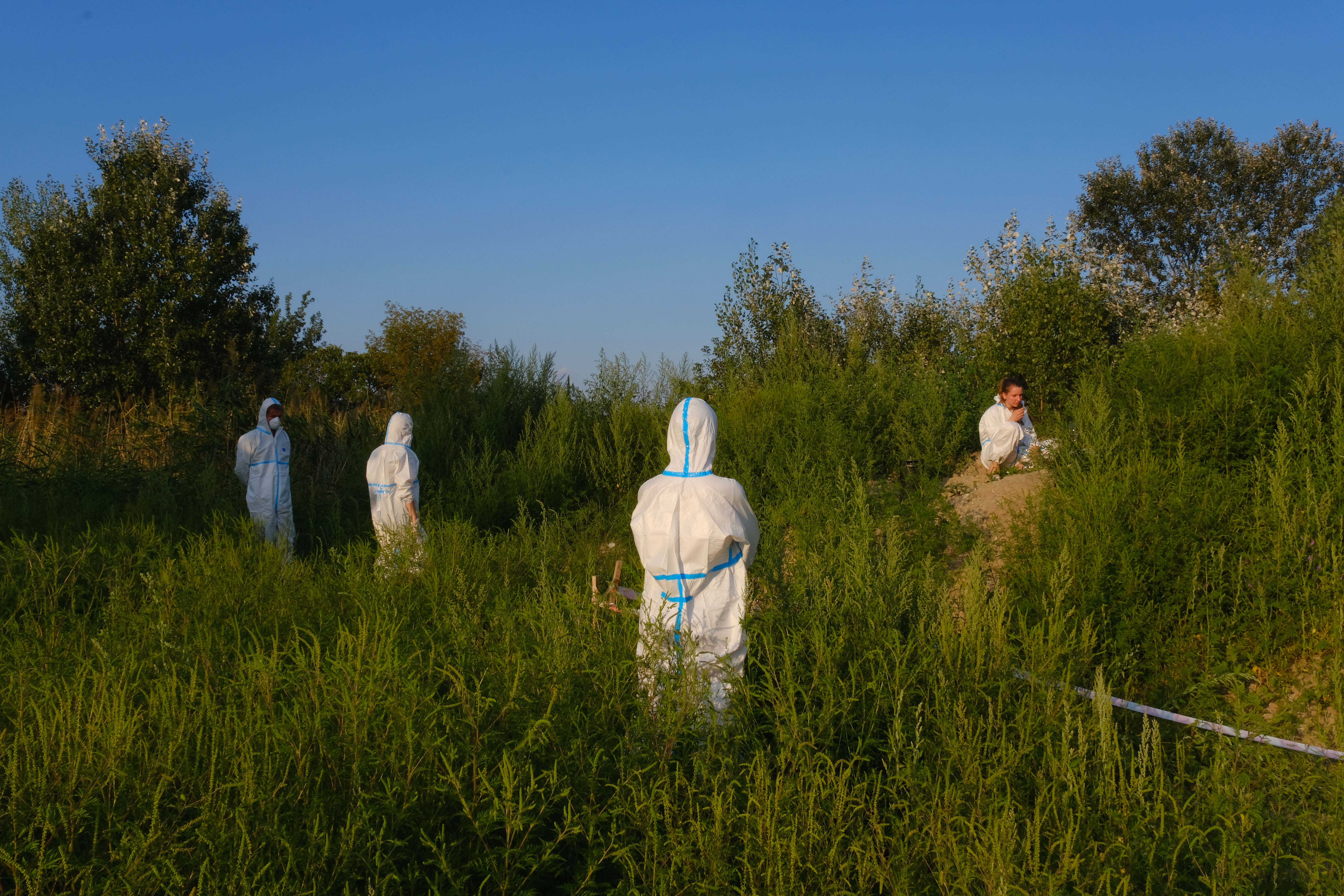

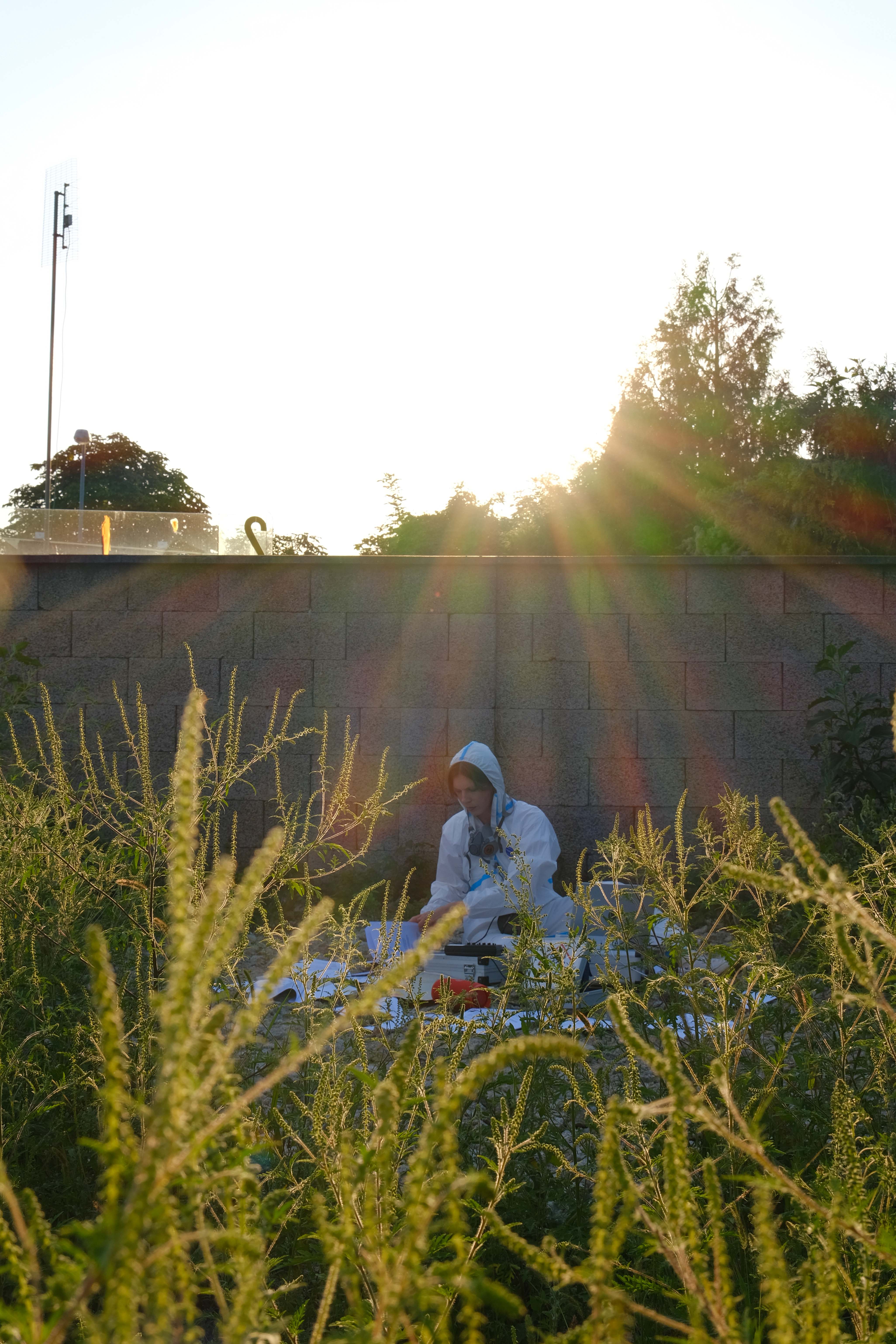







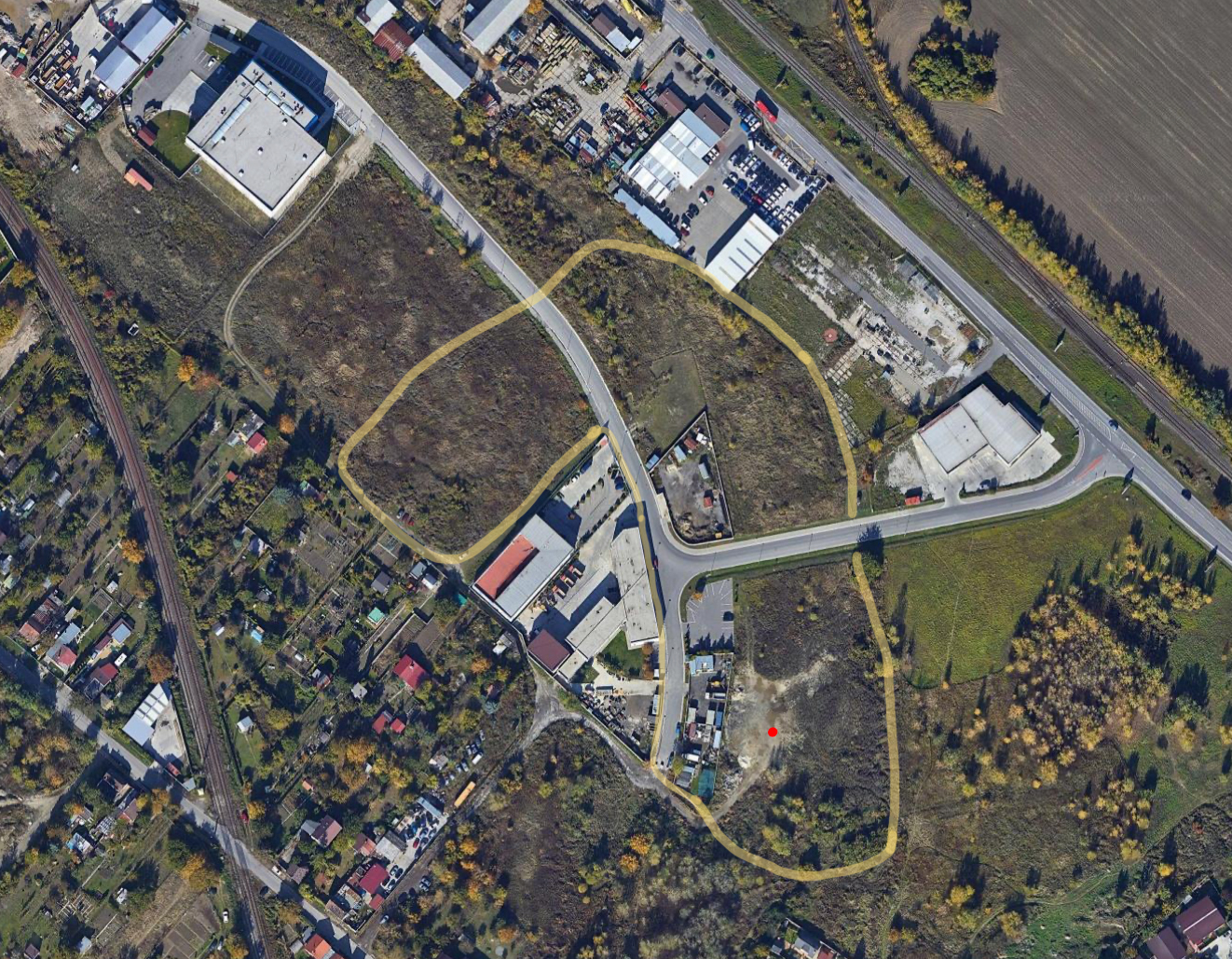
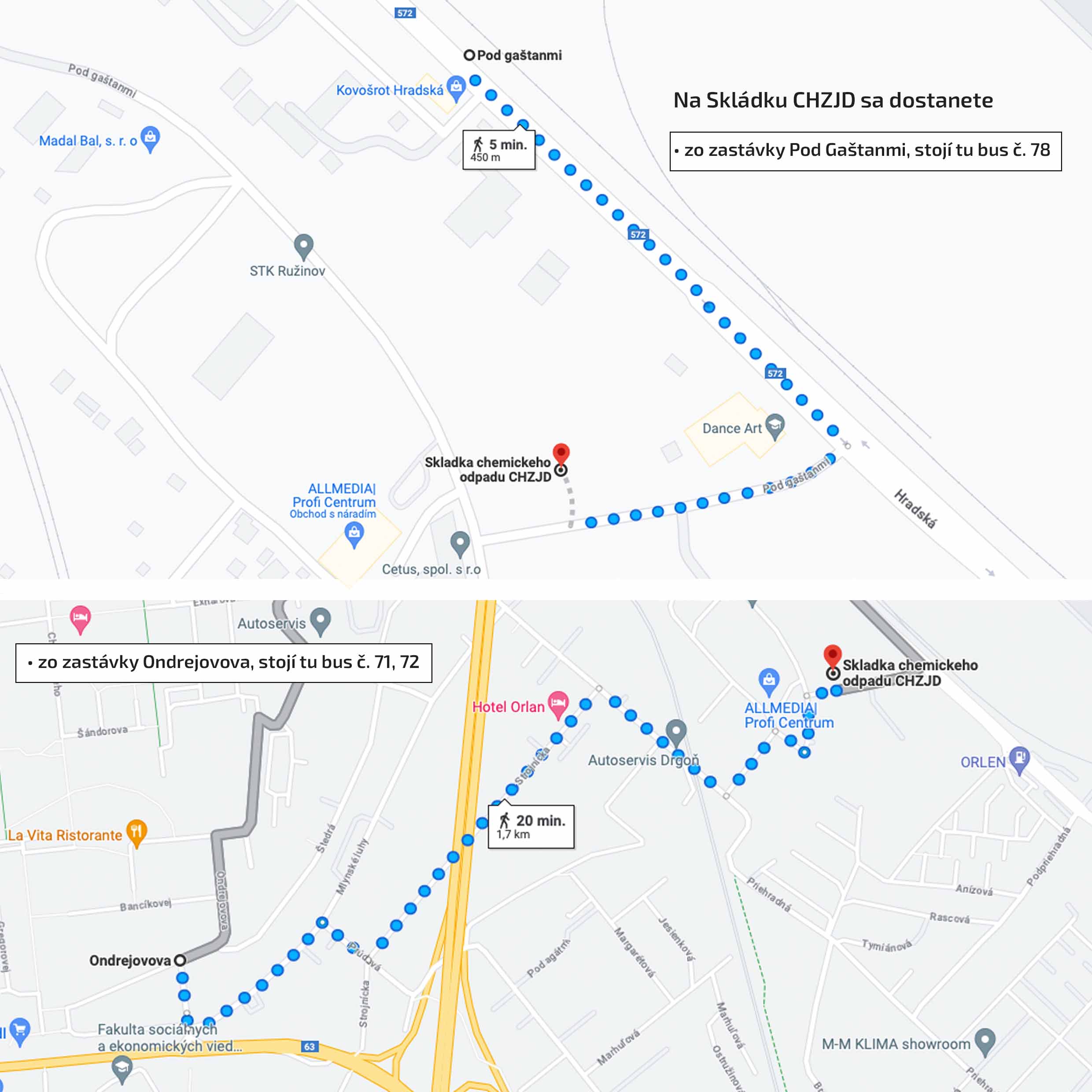
Signalling cell
Audio-reactive video Installation/Sound
If specific sound frequencies can influence cells in our body, to what extent are we then formed by the sound that is surrounding us? Aim of the project was to create a space for listening to individual frequencies, to perceive their effect on one’s mind and body.
Drawing from biology, our bodies respond to different cues by activating feedback mechanisms
to maintain a stable internal state. Feedback mechanisms begin when there is an external stimulus that leads to changes away from the set point, that triggers the correct feedback loop. This works by the communication of cells between each other called cell signalling. Inspired by this phenomena, I was working with subwoofers to visualise the feedback between a speaker
and a microphone on a water surface. I created a cell-like looking visual responding to the visitor’s interaction,
to the external stimulus.
The installation consists of a projection of the water surface which is captured by a web camera.
A hanging microphone in the centre of the space is creating feedback with the speaker. The sound of the feedback is generating cymatic shapes on the water surface. When visitors of the installation manipulate with the microphone they will change the sound and thereby influence the projected visuals.
Signalling cell is an installation developed for the Art Machines Festival in Utrecht, 7 December 2022. The concept was inspired by a workshop on sound feedback conducted by Edwin van der Heide, hosted by Creative Coding Utrecht.
Drawing from biology, our bodies respond to different cues by activating feedback mechanisms
to maintain a stable internal state. Feedback mechanisms begin when there is an external stimulus that leads to changes away from the set point, that triggers the correct feedback loop. This works by the communication of cells between each other called cell signalling. Inspired by this phenomena, I was working with subwoofers to visualise the feedback between a speaker
and a microphone on a water surface. I created a cell-like looking visual responding to the visitor’s interaction,
to the external stimulus.
The installation consists of a projection of the water surface which is captured by a web camera.
A hanging microphone in the centre of the space is creating feedback with the speaker. The sound of the feedback is generating cymatic shapes on the water surface. When visitors of the installation manipulate with the microphone they will change the sound and thereby influence the projected visuals.
Signalling cell is an installation developed for the Art Machines Festival in Utrecht, 7 December 2022. The concept was inspired by a workshop on sound feedback conducted by Edwin van der Heide, hosted by Creative Coding Utrecht.

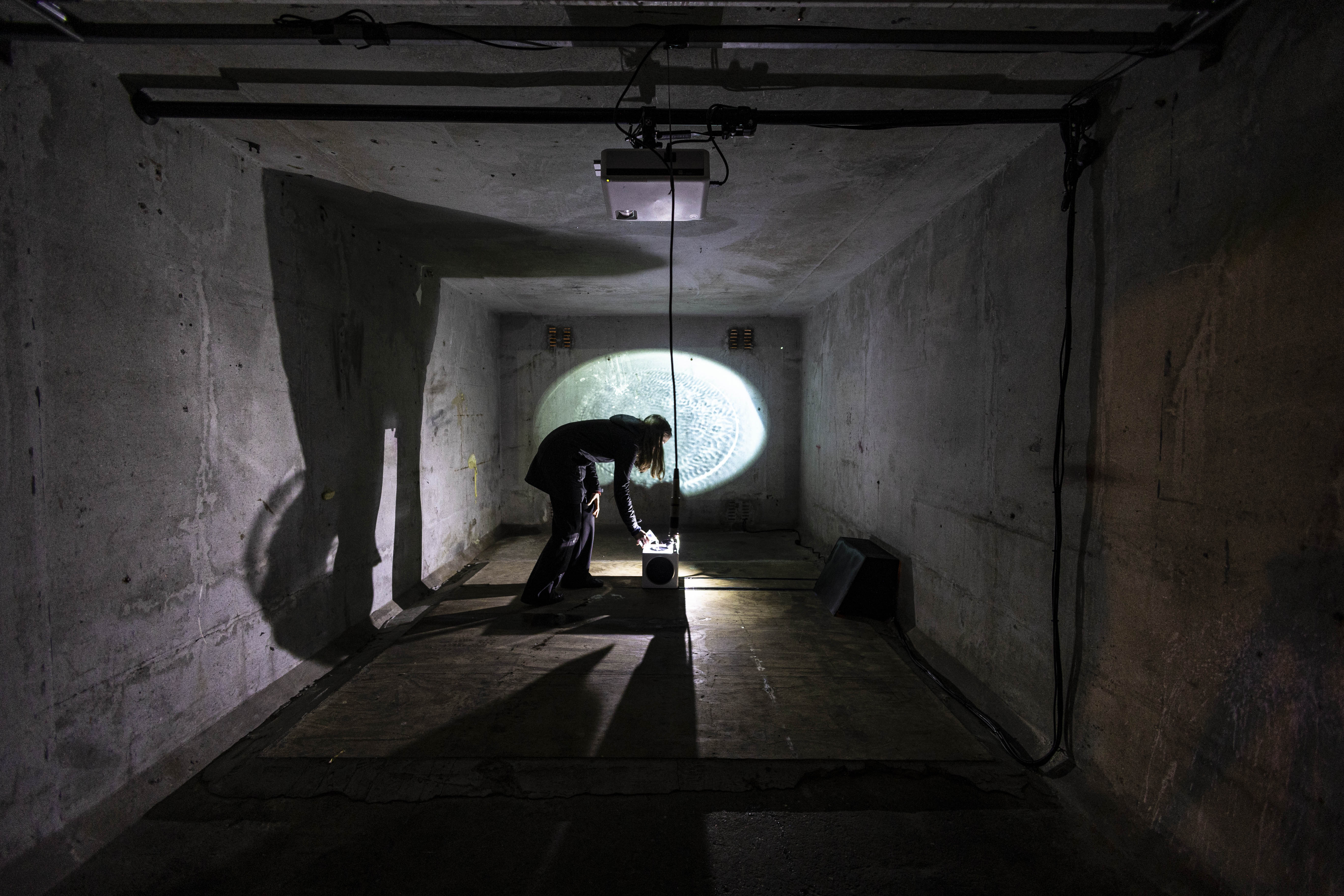

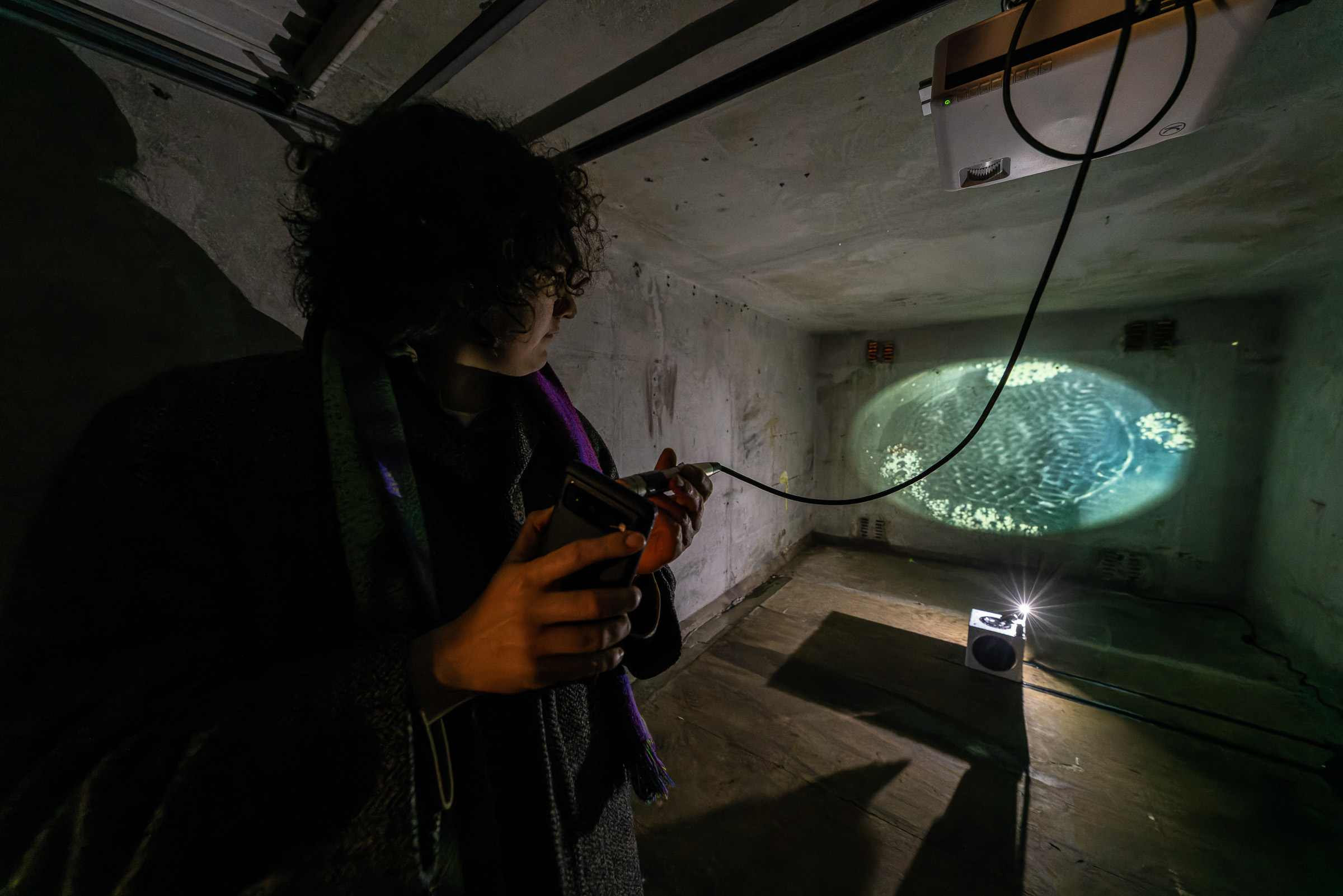

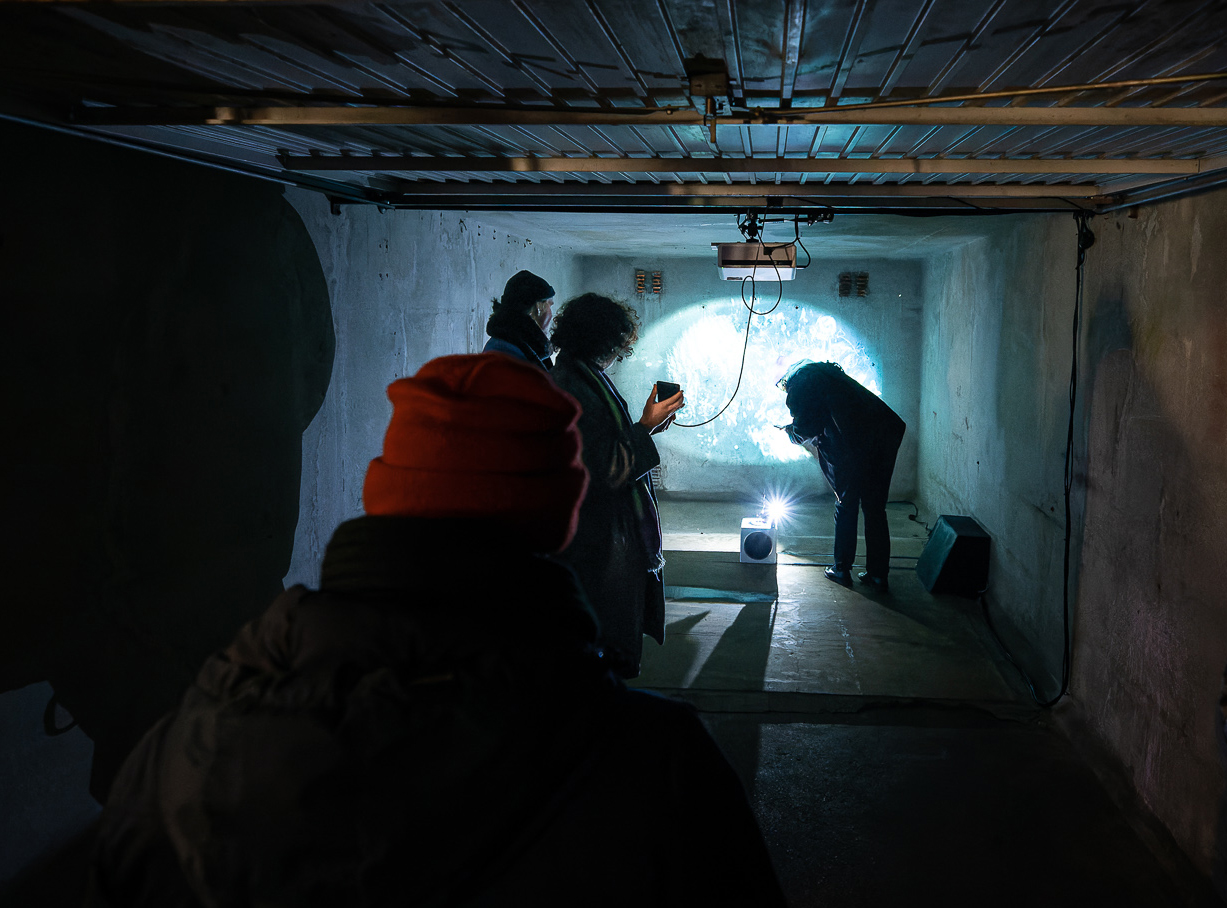

Visitors interacting with the installation: https://www.youtube.com/watch?v=GBGuWHo1-GI
Acousmatic Garden
Light Installation /
Sound
It is estimated that technology increases noise levels in cities by an average of one decibel per year. Excessive noise has
a pathological effect on health, it is related to the growth of cardiovascular diseases, sleep disorders, increased fatigue, tension
and anxiety. Some cities are currently solving this problem by introducing the function of an "acoustic designer", who regulates
and improves the soundscape of the city by his interventions. Aim of the project Acousmatic Garden is to draw attention to this issue through an installation placed within a specific urban environment. The output of the project is represented by two designs for public lighting, which display the sound intensity of the given area in a form of light projections.
The audio-visual environment creates a space to listen, introspect and perceive our surroundings with the integration
of technology. Intersecting nature and technology, noise and silence, garden and a the city. The final form of the project is a design solution for public lighting that translates the sound intensity of a given area into light projections.
a pathological effect on health, it is related to the growth of cardiovascular diseases, sleep disorders, increased fatigue, tension
and anxiety. Some cities are currently solving this problem by introducing the function of an "acoustic designer", who regulates
and improves the soundscape of the city by his interventions. Aim of the project Acousmatic Garden is to draw attention to this issue through an installation placed within a specific urban environment. The output of the project is represented by two designs for public lighting, which display the sound intensity of the given area in a form of light projections.
The audio-visual environment creates a space to listen, introspect and perceive our surroundings with the integration
of technology. Intersecting nature and technology, noise and silence, garden and a the city. The final form of the project is a design solution for public lighting that translates the sound intensity of a given area into light projections.


